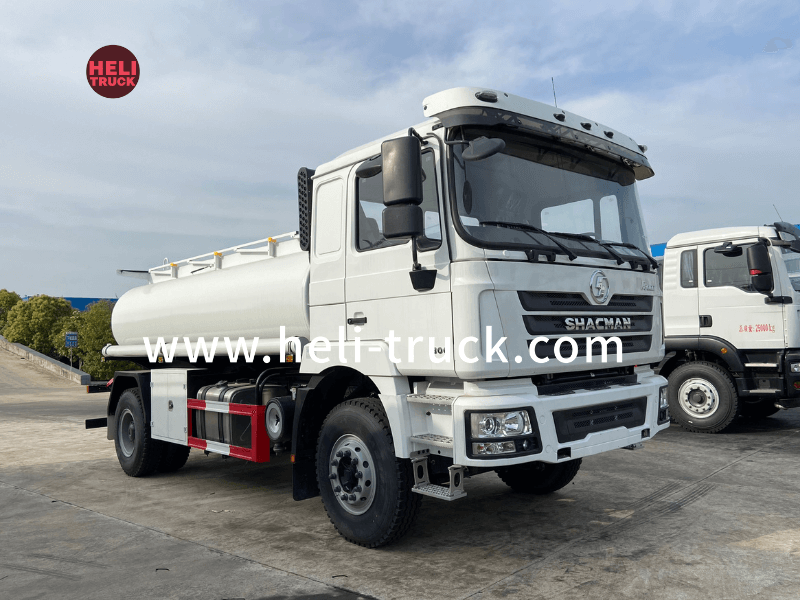Exploring Work Truck Cab Options Choosing the Right Configuration for Your Needs

Introduction
Work trucks are essential vehicles for various industries, ranging from construction and landscaping to delivery and maintenance services. When it comes to work trucks, one of the key decisions that buyers need to make is choosing the right cab configuration. The cab of a work truck not only affects the comfort and convenience of the driver and passengers but also impacts the overall functionality and efficiency of the vehicle. In this article, we will explore the different work truck cab options available in the market, highlighting their features, pros, and cons to help you make an informed decision.
1. Regular Cab
The regular cab is the most basic and traditional cab configuration for work trucks. It typically features a single row of seating with space for two or three occupants. Regular cabs have a smaller footprint compared to other cab options, making them ideal for navigating tight urban streets or worksites. They also offer a larger cargo bed area, which can be advantageous for hauling equipment and materials.
Pros:
- Compact size for easy maneuverability
- Larger cargo bed area
- Generally more affordable compared to other cab options
Cons:
- Limited seating capacity
- Less interior space for storage or passengers
- Limited comfort features compared to other cab configurations
2. Extended Cab
The extended cab, also known as the access cab or super cab, offers additional seating and interior space compared to the regular cab. Truck mounted crane stability features a second row of seating with small rear doors that provide access to the back seats. Extended cabs are popular among work truck buyers who need to accommodate more passengers or store tools and equipment inside the cab.
Pros:
- Additional seating capacity
- Increased interior space for storage
- Rear doors for easier access to the back seats or cargo area
Cons:
- Limited legroom and comfort for rear passengers
- Smaller cargo bed area compared to regular cab models
- Can be more expensive than regular cabs
3. Crew Cab
The crew cab, also known as the double cab or quad cab, is the largest cab configuration available for work trucks. It features a full second row of seating with four full-sized doors, providing ample space for passengers and cargo. Crew cabs are popular among work truck buyers who need to transport a crew of workers to and from job sites or require additional interior space for tools and equipment.
Pros:
- Spacious interior with seating for up to six passengers

- Ample cargo space with rear seats that can be folded down
- Enhanced comfort and convenience features compared to regular and extended cabs
Cons:
- Larger footprint, which can make parking and maneuvering in tight spaces challenging
- Generally more expensive than regular and extended cabs
- Reduced cargo bed area compared to regular cabs
4. Chassis Cab
Chassis cabs are a versatile cab configuration that provides a customizable platform for a wide range of work truck applications. Unlike traditional pickup truck cabs, chassis cabs feature a bare cab and chassis without an integrated cargo bed. This allows buyers to customize the rear portion of the vehicle with a flatbed, service body, or other specialized equipment based on their specific needs.
Pros:
- Customizable platform for various work truck applications
- Ability to install specialized bodies or equipment
- Enhanced flexibility for different work requirements
Cons:
- Requires additional investment to outfit with a custom body
- Limited seating capacity compared to crew cabs
- May have a longer lead time for customization and delivery
5. Cab-over-Engine (COE)
Cab-over-engine (COE) trucks, also known as cab-over or flat-nose trucks, feature a unique cab design that places the driver directly above the engine. This configuration maximizes the cargo area behind the cab, making COE trucks ideal for applications that require a compact footprint and maximum cargo capacity.
Pros:
- Compact design for improved maneuverability in urban areas
- Maximum cargo space compared to conventional cab configurations
- Excellent visibility for the driver due to the forward cab position
Cons:
- Limited interior space for passengers and storage
- Potentially higher noise levels and engine heat in the cab
- Less common in the North American market compared to conventional cab designs
Conclusion
Choosing the right cab configuration for your work truck is a critical decision that can impact the efficiency, comfort, and functionality of your vehicle. Whether you opt for a regular cab for its compact size, an extended cab for additional seating capacity, a crew cab for transporting a crew of workers, a chassis cab for customization options, or a cab-over-engine truck for maximum cargo space, each cab configuration has its unique features and benefits. By understanding the pros and cons of each cab option, you can select the one that best suits your specific work truck needs and preferences.
